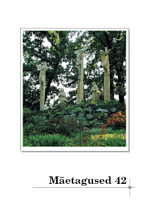Päikesekuninga kontseptsiooni tekkest ja arengust Anatoolias II eelkristlikul aastatuhandel
On the Emergence and Development of the Concept of Sun King in Anatolia in the 2nd Millennium BC
Author(s): Vladimir SazonovSubject(s): History
Published by: Eesti Kirjandusmuuseum
Keywords: Anatolia; Assyrians; divination of ruler; Egypt; Hittites; ideology; Mesopotamy; royal epithet; sun god
Summary/Abstract: The concept of sun king was widely spread in ancient cultures, for example in Peru (among the Incas), India, and the Ancient Middle East already in the 2nd and 3rd millennium BC. In Ancient Egypt the perception of Pharaoh as the son of Ra and the sun king formed in the Old Kingdom by the middle of the 3rd millennium BC. The king was identified with the sun already by Hittites, Babylonians, and Assyrians in the 2nd millennium BC. Among the Hittites, ‘My Sun’, which could be interpreted also as ‘Majesty’, became the most popular royal title. The first Assyrian ruler to adopt the epithet ‘the Sun God of All People’ was the despotic Tukulti-Ninurta I (1244-1208). Until now, some scholars have argued that the concept of sun kind emerged in Mesopotamia and Anatolia under the influence of Egypt. This argument, however, has little ground because it is not likely, at least there is no record of it, that Egypt had contacts with Mesopotamia and Anatolia prior to the 3rd millennium BC, and by the 2nd millennium the contacts had been established but the influence of Egypt on Anatolia was rather limited. At the same time, the influence of Mesopotamia and the local Hattians, who had occupied Anatolia before the coming of Hittites, on the Hittite ideology was remarkable. Several concepts connected to Hittite royalty have been borrowed from Mesopotamia, and from Hattians. There is circumstantial evidence that the concept of sun king may have emerged at the end of the 3rd millennium BC in Sumer and Akkad, and from there spread to Anatolia. It cannot be ruled out, though, that the phenomenon may have emerged spontaneously and developed independently without major external influences.
Journal: Mäetagused. Hüperajakiri
- Issue Year: 2009
- Issue No: 42
- Page Range: 91-110
- Page Count: 20
- Language: Estonian

